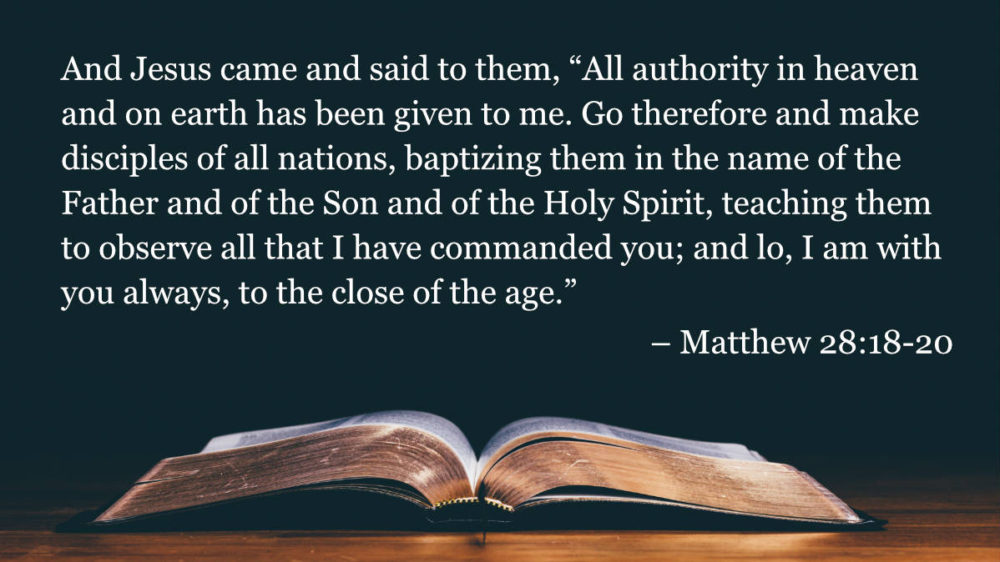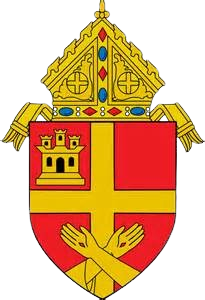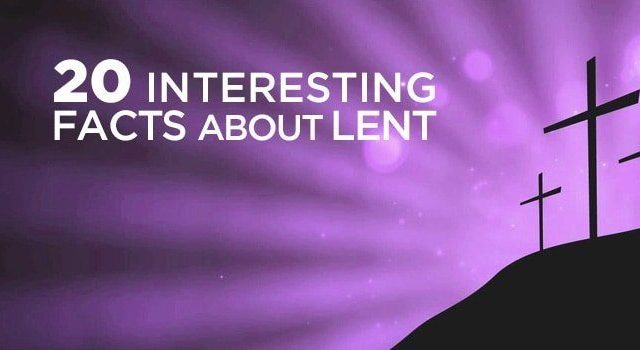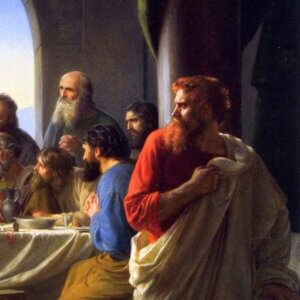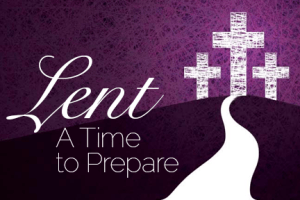How long is the Easter season?
Much like Christmas, Easter is no “one-day” feast.
On Tuesday we discussed the octave—the eight days of rejoicing that constitute our Easter and Christmas commemorations. We will continue celebrating the Easter octave all through this week.
But does our Easter celebration end there? Is it all over once the octave concludes?
The resounding answer is: No!
The season of Easter continues on for a full fifty days, up through the feast of Pentecost (which is June 5th this year). Easter is the most important feast in the liturgical calendar, and it only makes sense that the Church should celebrate not just a feast, not just an octave, but a whole season in honor of Our Lord’s Resurrection.
Within these fifty days we celebrate some important feasts: Divine Mercy Sunday (that’s this coming Sunday), the Feast of the Ascension (in most places, the Sunday before Pentecost), and finally, Pentecost itself, the birthday of the Church!
So don’t wind down your celebrations yet. We’ve got seven weeks of joy ahead of us.
Of course, during the abundant days of this season, you’re bound to attend some get-togethers with friends and family to celebrate. And there’s a whole bunch of Sunday brunches to plan for, not to mention Mother’s Day.
Who saw the risen Christ first?
Many saints have spoken about the identity of the first witness of the Resurrection.
In the scriptural accounts of the Resurrection, the story always begins with someone searching for Jesus at the empty tomb after His departure from it. The Gospels don’t tell us where Christ was at that point—nor do they definitively say who saw Him first.
But one saint-supported theory offers an answer to the latter question. According to Pope St. John Paul II, St. Vincent Ferrer, St. Ignatius of Loyola and others, the first witness of Jesus’ Resurrection was His beloved Mother Mary.
Mary was the one who had been most united with Our Lord in His suffering and death. She was the one who was waiting for Him with the greatest hope and expectation—the one who, notably, never went to an empty tomb searching for Him because she knew He wasn’t there.
Our Lady’s faith in her Son’s Resurrection never failed. She did not go looking for the living among the dead. She simply waited, prayerfully keeping vigil throughout the time when Our Lord was hidden in the earth. She knew that He would come.
Our Lady waited faithfully for the Resurrection. La Dolorosa by Cristóbal de Villalpando (Museo Soumaya/ProtoplasmaKid, CC BY-SA 4.0)
One can imagine the tender joy they experienced upon seeing one another again, after the sufferings they had both endured for our sake. A spear had pierced His Heart and a sword had pierced hers, but now, sin and death were overcome! The night was over and the glorious dawn was here at last.
To see the face of God—how beautiful the reward of those who are faithful, who bear their crosses with love, who wait for the Lord with a hopeful and steadfast spirit!
What is an “octave”?
And why are we celebrating one this week?
The Church knows that one day of rejoicing just isn’t enough.
Easter is the “Solemnity of Solemnities”—the biggest feast day of the year. It’s so big, in fact, that the Church celebrates it for not one, but eight full days!
For her most important feast days, the Church assigns “octaves”: eight days of rejoicing in which we celebrate each day as though it were the feast day itself.
The tradition of octaves goes back to the 4th century and is possibly connected to one or both of two events.
During the week after Easter and Pentecost, the newly-baptized neophytes would continue to wear the white garments they received at their baptism, rejoicing for eight days in the joyful celebration of their new life in Christ. In the older calendar, the Sunday after Easter is called “Dominica in Albis”—the “Sunday in White”—to commemorate the laying aside of the white garments.
The other event is the dedication of the churches of Tyre and Jerusalem by the Emperor Constantine. This was the first “octave” properly-speaking that we know of, and was done in emulation of the Jewish custom of an eight-day feast in dedicating the Temple.
Octaves underwent many other additions, deletions, and developments over the course of history. Today we celebrate two of them: one for Easter and one for Christmas. The older calendar of the Church also retains the octave of Pentecost.
So, rejoice! As St. Paul would say: “Again, I say, rejoice!” (Philippians 4:4).
What is the “blessing” of Easter baskets?
Have you ever taken part in this beautiful Holy Saturday tradition?
Perhaps your parish arranges a “blessing of Easter baskets” on Holy Saturday.
Families bring baskets full of delicious food, often beautifully decorated with ribbons and flowers, shrouded in a white linen cloth, to be blessed by the priest. The food is then taken home, to be shared on Easter morning.
This tradition comes to us from Poland (where it’s called swieconka) and other Eastern European countries.
The items in the basket all carry a significant meaning. They vary by region and cultural tradition, but here are a few of the most common ones:
- Bacon: the abundance of God’s goodness
- Butter: the richness of our salvation
- Lamb: Jesus, the Lamb of God
- Easter bread: the risen Christ
- Eggs: the Resurrection and the new life that Christ has brought us
- Kielbasa links: the chains of death that Christ has broken, and, like bacon, the abundance of His gifts
- Salt: purification, freedom from corruption, immortality
- Sweets: Heaven
The baskets are often richly decorated with ribbons, lined with an embroidered napkin, and overlaid with a linen cloth representing the shroud of Christ. Sprigs of boxwood—the Easter evergreen—are an especially popular feature in Poland.
Why is today called “Spy Wednesday”?
Do you know this traditional title for Wednesday of Holy Week?
Then one of the twelve, who was called Judas Iscariot, went to the chief priests and said, “What will you give me if I deliver him to you?” And they paid him thirty pieces of silver. And from that moment he sought an opportunity to betray him.
—Matthew 26:14-16
The day before Jesus entered into His Passion, a spy arose from among His closest friends. The traitor Judas Iscariot made his deal with the chief priests, agreeing to betray the Son of God for a pile of coins. Taking advantage of the gift of Christ’s friendship, Judas kept the veneer of an Apostle, but was secretly plotting betrayal.
Judas, who had been a chosen assistant in the ministry of Christ, who had shared His table, who had enjoyed the fellowship of God Himself, who would be present at the first Holy Mass—he would exchange it all for a pittance.
A wound from an enemy is to be expected. But a wound from a friend—and a friend who has received nothing but the greatest possible gifts—that is a painful wound indeed. And what is more, the traitor would send the Son of Man to His death with a kiss, with a sign of love and friendship!
To remember this deed of darkness that precipitated the events of the Passion, the Church has traditionally called this day “Spy Wednesday.”
Let us remember today the deep wound in Christ’s loving Heart at the betrayal of Judas—and perhaps look into our own hearts, too, to see when we might have preferred the things of this world to the superabundant love of Christ.
The Seven Last Words of Christ—Part I
“Father, forgive them, for they know not what they do.”
The seven last words of Christ—the final phrases that Our Lord spoke during His Passion—have been the subject of Christian meditation since His death, particularly on Good Friday. Bishop Fulton Sheen preached on these seven sacred words every Good Friday for over half a century.
We invite you to join us each Friday of Lent as we meditate on each of these seven words.
Today, the first Friday of Lent, we consider the first word:
“Father, forgive them, for they know not what they do.”
The words are stunning upon impact.
It wasn’t enough for Jesus to say to us, “Love your enemies.” He showed us how to do it.
He forgave the friend who betrayed Him, the chief priests who falsely accused Him, the cowardly judge who condemned Him, the vicious crowd that called for His crucifixion, the callous soldiers who scourged Him nearly to death, nailed Him to a cross, and left Him to asphyxiate. All when He was perfectly and clearly innocent.
It doesn’t make forgiving our enemies seem so difficult. Though we, too, suffer hurt, betrayal, and other wounds from those who challenge our charity in this life, Christ has gone before us in all these sufferings—and we have His grace to assist us.
But there’s something else.
Jesus wasn’t just addressing the individuals responsible for His death. He was asking His Father to have mercy on all of us. On you and me. Sure, we can say that we aren’t the historical Judas, or the soldiers that nailed Him to the Cross. But our sins were the reason for His Passion—it was our sin that He atoned for with His precious Blood. Our sin tormented Him far more than any physical torture.
And strangely, paradoxically, mysteriously—the very Blood that our sins shed was the cause of their forgiveness. The Blood of Christ, which, as St. Paul says, “speaks more eloquently than that of Abel” (Hebrews 12:24), cries out to His Father for mercy, rather than for the justice that Abel’s demanded. Not only His words, but His Blood, His whole being, supplicate His Father on our behalf.
It makes sense that these words would be the first of His seven last words. They encapsulate the entire purpose of His Passion. They are, as it were, the opening words of the final act of His Passion, His death upon the Cross.
The Seven Last Words of Christ—Part II
“Truly, I say to you, today you will be with Me in Paradise.”
Today, we reflect on the second of Our Lord’s final words from the Cross. They were spoken to St. Dismas, the Good Thief, as he and Jesus hung dying side by side on Good Friday. We find these words only in the Gospel of Luke.
Dismas and his fellow-thief had, like Christ, been condemned to death by crucifixion. Unlike them, Jesus was innocent, suffering His punishment due to others.

The bad thief reviled Christ and demanded that He save Himself and them, if He be truly the Son of God. Dismas rebuked him for his impiety, proclaiming that they—as criminals—deserved their punishment, but that Christ had done no wrong.
A statue of St. Dismas in the Basilica of Our Lady of Zapopan, Mexico (photo: Nheyob/CC BY-SA 4.0)
Dismas then made a rather strange request of Jesus:
“Jesus, remember me when you come into your kingdom.”
He did not ask to be saved from the cross. He did not ask to escape the punishment for his crimes. He did not even ask for mercy. He simply asked to be remembered. The request is stunning in its simplicity and its profound humility.
Even more stunning is the response of Our Lord, Who does far more than simply remember the repentant.
“Truly I say to you, today you will be with Me in Paradise.”
Dismas will not only be remembered. He will be forgiven, and the gates of Paradise will be open to him, once his (and Our Lord’s) agonies are complete. The Just Man hanging beside Dismas has taken the crimes of Dismas and all of humanity upon Himself, so that we can escape the punishment we deserve.
Dismas’ reaction is left to the imagination of the reader, but one can surmise that he died filled with joy and hope. Perhaps he offered up his suffering—in union with Christ—in reparation for his sins and those of humanity. What a beautiful and extraordinary thing, to suffer in such perfect imitation of Christ! What a grace—to rise from being a common thief to being the chosen companion of Jesus in His final hours! How superabundant is the mercy of God!
If we emulate the humility and repentance of Dismas, the same path of redemption lies open to us—even if we have a past we’re not proud of.
The Seven Last Words of Christ—Part III
“Behold your son…behold your Mother.”
As we approach the Third Sunday of Lent, we contemplate the beautiful words our dying Lord spoke to His Mother and to St. John the beloved disciple, in whose Gospel these words are found.
When Jesus saw his mother, and the disciple whom he loved standing near, he said to his mother, “Woman, behold, your son!” Then he said to the disciple, “Behold, your mother!” And from that hour the disciple took her to his own home.
—John 19:26-27
Let’s examine each of these words carefully.
“Woman…”
It might seem strange that Jesus calls His Mother “Woman,” which, to our ears, sounds rather disrespectful. But in Jewish culture at the time, “woman” was actually a dignified form of address, conveying honor and respect.
Moreover, let’s think about where else in Scripture we’ve heard someone called “woman.” Genesis 3:15 springs instantly to mind, where God curses the serpent for his deception:
“I will put enmity between you and the woman, and between your seed and her seed…”
God is proximately referring to Eve, whom the serpent deceived; but more importantly, He is referencing Our Lady, whose seed—Jesus Christ—will destroy the power of the serpent. So when Christ calls His Mother “Woman,” He is evoking her role as the new Eve, through whom the promise of a Redeemer is fulfilled.
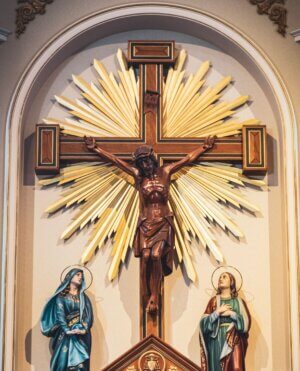
“Behold your son.”
With these words, Jesus is referring not only to St. John, but to all of us.
The timing of this address is critical. Remember that Our Lord is dying. He says these words as He is literally being sacrificed for our redemption. He speaks as He is opening the doors of the Kingdom, as He is making us sons of God again.
It is as though He is saying to His Mother:
“Now at last is the moment of redemption. Behold, I bring you mankind, cleansed and redeemed. Behold your son, fit once again to be called such.”
In a concurrent way, He is also referencing mankind’s newfound unity with Himself. The Church is His Mystical Body, made so through His suffering and death; and just as Our Lady is His Mother, so is she the Mother of His members.
“Behold your mother.”
By addressing both His Mother and St. John (that is, us) Jesus is not just assigning titles. He is establishing a relationship. We are Mary’s children now. She is truly our Mother. She will care for us, teach us, and protect us as we grow spiritually and journey towards Heaven.
But a relationship goes two ways. We can’t call Mary our Mother and then treat her as an afterthought. Rather, we are called to love and honor her. Bring her your joys, sorrows, and problems. Ask her for guidance and wisdom in every path you take. Thank her for her unending “yes” to God. And now and then, just tell her you love her.
A wonderful way to honor our Sorrowful Mother—especially during this time of Lent—is the Chaplet of the Seven Sorrows, a devotion nearly eight hundred years old.
The Seven Last Words of Christ—Part IV
“My God, my God, why hast Thou forsaken me?”
Today we meditate upon the fourth of Our Lord’s seven last words. We are posting this meditation early this week, due to Friday’s feast of the Annunciation.
Of all seven, the fourth is, perhaps, the most striking in terms of its portrayal of human suffering. It speaks to the greatest of these sufferings, the most fearful punishment for sin, the worst thing that can possibly happen to a person: separation from God.
Now from the sixth hour there was darkness over all the land until the ninth hour. And about the ninth hour Jesus cried with a loud voice, “Eli, Eli, la’ma sabach-tha’ni?” that is, “My God, my God, why hast thou forsaken me?”
—Matthew 27:45-46
Christ, Who is God Himself—abandoned by God? Separated from God? How? What do these words mean?
Of course, Christ was never truly separated from or abandoned by His Father. But He exempted Himself from none of the punishments due to our sins, not even the worst experience—Hell itself, the most desolate state of separation from God, a punishment that would have been ours if He had not borne it for us.
But, you may ask, how does a divine Person suffer? The answer lies in His two natures. He allowed Himself to experience all these things in His human nature, without the aid of His divine nature. As Bishop Fulton Sheen says, “Our Lord restrained His divinity from mitigating even with one drop of consolation the bitterness of His chalice” (The Cries of Jesus from the Cross, p.172).
Hearing these words of Christ, we are also compelled to think of those times in every human life when God feels far away, even when sin is not a factor. These moments can be the result of some human loss, or perhaps the “dark night of the soul” that afflicts holy souls striving for God in prayer. These can be excruciating moments, but we can’t accuse God of “not knowing what it’s like.” He knows.
Of course, He didn’t have to put Himself through it to know—but He did anyway, so that our human minds could understand.
The Seven Last Words of Christ—Part V
Today we meditate upon Christ’s fifth word: “I thirst.”
After this Jesus, knowing that all was now finished, said (to fulfil the scripture), “I thirst.” —John 19:28
So much is contained in these two short words, which constitute the fifth of the Seven Last Words of Christ.
Physical thirst isn’t the type of thirst He is referring to here. Rather, He is expressing a longing of His Heart—a thirst of the spirit.
On the Cross, Jesus thirsted for love, for human love, for our love.
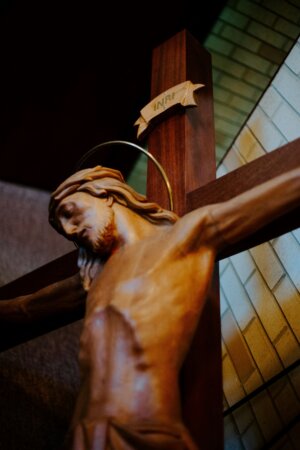 It seems impossible for God to thirst in such a way—after all, He does not need our love. He is Love Itself, existing eternally in a Trinitarian relationship of love. He has no need of anything His creatures could give Him.
It seems impossible for God to thirst in such a way—after all, He does not need our love. He is Love Itself, existing eternally in a Trinitarian relationship of love. He has no need of anything His creatures could give Him.
And yet, in a certain mysterious sense, the God who is in need of nothing chose to “need” us. Our Lord, in His human nature, chose to experience human needs, chief among which is the need for love. But His thirst is immeasurably greater than ours, because His love is infinitely greater.
And what is more, this thirst is not for human love in general, but for the love of every soul in particular—for your love, for mine. What an infinite wonder—that the God of all abundance should make Himself needy for the love of His creatures! That He should call out to your heart and to mine in His last agony, beseeching us for our love!
And who has done more to earn it than He? We owe Him love as His creatures, but in order to win our love He became one of us, lived our toilsome life on earth, and offered Himself up to the justice of God so that we didn’t have to face it. He said, “I thirst” at the moment in which He had given everything that He could give—all for our love.
On Calvary, those who stood near heard His physical cry, and rushed to give Him a drink—not of cool water, but of vinegar, a bitter and unpleasant draught. Far more bitter to Him, though, was the silence His true thirst would meet in the hearts of such a vast majority of human souls.
As the Psalmist foretold:
They gave me poison for food, and for my thirst they gave me vinegar to drink.
—Psalm 69:21
As we approach Holy Week and the solemn commemoration of Good Friday, let us meditate a while on these words of Our Lord, upon the incomprehensible thirst of God—and our response to it.
Our Lord’s Sacred Heart, always portrayed with flames of love emanating from it, is the very image of His burning love for us.
The Seven Last Words of Christ—Part VI
When Jesus had received the vinegar, He said, “It is finished…”
Last week we meditated upon those brief yet profound words of Christ, “I thirst,” as recounted in the Gospel of John. If we continue reading this same Gospel, we immediately encounter the sixth of His Seven Last Words from the Cross:
When Jesus had received the vinegar, he said, “It is finished”; and he bowed his head and gave up his spirit.
—John 19:30
One cannot help but feel a sense of relief when reading these words. We are approaching the end of the Passion narrative. Are the sufferings of Our Lord coming to an end at last?
“It is finished” can also be translated as “It is consummated,” that is, fulfilled or completed. We are not just drawing to a close; we are drawing to a fulfillment.
Agnus Dei by Francisco de Zurbarán
Here is the final fulfillment of the divine promise made to our first parents. Here is the climax towards which centuries and centuries of salvation history have leaned, reached, and yearned.
Although the whole ordeal lasted—by a temporal estimation—less than a full day, one can truly say that the entire history of the world passed in those few hours.
During those hours, Our Lord saw every sin that was ever committed or ever will be committed from the beginning to the end of time. He saw each one in its individual ugliness and malice, and bore the cost of it in Himself.
For each one, He offered His own Precious Blood to His Father in reparation. He felt—more profoundly than we can ever comprehend—the agonizing sorrow for each offense that none of us, cold and callous as we are, could ever adequately feel.
Every human event gained its proper meaning through this one Sacrifice. Everything we do and everything we suffer is of no value without the Blood that vivifies, redeems, and restores it all. “Without Me you can do nothing” (John 15:5).
Only through the lens of the Cross does anything—particularly human suffering—make sense or have value. And from the heights of the Cross, with the world at His feet, the Lamb of God saw and redeemed it all. “And I, if I be lifted up from the earth, will draw all things to Myself” (John 12:32).
It was a long day, the longest day, and now, at last, it is finished.
The Seven Last Words of Christ—Part VII
“Father, into thy hands I commit my spirit…”
“…thou hast redeemed me, O Lord, faithful God.”
—Psalm 31:5
Today is Good Friday, the day the Lamb of God died for our sins. Amidst the solemnity of this most sacred day, we reflect on the final word He spoke from the Cross:
Then Jesus, crying with a loud voice, said, “Father, into thy hands I commit my spirit!” And having said this he breathed his last.
—Luke 23:46
Jesus is quoting the fifth verse of Psalm 31, which continues with the glorious statement: Thou hast redeemed me, O Lord, faithful God.
Christ speaks in the person of man, whose place He has taken before the judgment seat of God. Man proclaims that God has redeemed him. The story of salvation has come to its climax—the moment of deliverance has come at last! The God Who is faithful has kept His promise and brought redemption to humankind.
The curtain of the temple is rent in two as Christ offers up His spirit, because there is no longer a division between God and man. The Holy of Holies is open to man, because he is clothed with the merits of Christ.
Let’s continue with the next verse in Luke:
Now when the centurion saw what had taken place, he praised God, and said, “Certainly this man was innocent!”
—Luke 23:47
Or as related by Mark and Matthew: “Truly this man was the Son of God!” (Mark 15:39, Matthew 27:54)
Yes, this man is the Son of God, and He is innocent—and because of Him, we too are sons of God, and we too are innocent, freed by the outpouring of the Blood of the Lamb.

Holy Trinity by Jusepe de Ribera
Thank you for joining us for these Fridays of Lent as we contemplated the greatest last words ever spoken. May these words remain engraved in our hearts during this Sacred Triduum, throughout the coming season of Easter, and every day of the year.
Christ’s final word particularly reminds us of the love of God the Father, Who so loved us that He gave us the best gift He had: His only Son. Our Holy Trinity Crucifix beautifully illustrates the Trinitarian nature of the gift of salvation. Christ upon the Cross rests in the arms of the Father, while the Holy Spirit spreads His wings above all. A wonderful meditation for Easter, Pentecost, and Trinity Sunday!
The tree that bears the Wounds of Christ
What can the dogwood blossom teach us about the Passion of Our Lord?
Right about this time of year, the beautiful dogwood tree makes its appearance.
We love it here in North Carolina—it’s our state flower! Small but instantly recognizable, the blooming dogwood hides among the trunks of larger trees, sprinkling its rose-tinted flowers through the browns and greens of the forest.
You may be familiar with this delightful denizen of the South. But did you know that it carries in its petals a powerful meditation on Our Lord’s Passion?
According to legend, the dogwood was once a tall, mighty tree, taller than any great cedar. Its wood was of the highest quality, hard and sturdy, popular among builders and carpenters for many different purposes. Because of its strength and height, it was chosen for the wood of Jesus’ Cross.
The dogwood was heartbroken at having been turned to such a wicked purpose. Our Lord, knowing the sorrow of the tree as He hung upon it, blessed the tree in exchange for its devout sorrow for His suffering.
The tree would no longer be tall, but short, so it would never again be used for a cross.
It would bear a blossom with four petals, in the shape of the Cross, to forever remind men of the sacrifice of Calvary.
The edge of each petal would bear a little imprint, tinged with red, representing the four nail-wounds in Christ’s hands and feet and His Precious Blood.
In the center of the flower would rest a small cluster, reminiscent of His crown of thorns.
When you stop to admire a dogwood tree this spring, take a moment to meditate upon the Passion of Jesus, so beautifully illustrated on its lovely blossoms.
Why do some churches veil their statues this week?
This ritual is a visual and mental preparation for Christ’s Passion.
As you walked into church for Mass this past weekend, you may have noticed something unusual.
Beginning on the Fifth Sunday of Lent, many churches cover their statues, crucifixes, and sacred images—except for the Stations of the Cross—in purple cloth. The veil on the crucifix will remain until Good Friday, at which time it will be removed as part of the liturgy. The other purple cloths remain until the Easter Vigil.
What is the meaning of this somber ritual?
In the older church calendar, this Sunday is called Passion Sunday. The week is called Passion Week, and the entire section of Lent including this week and Holy Week—Passiontide.
The focus of these two weeks is completely upon the impending Passion of Our Lord. By temporarily depriving us of the consolation of our beautiful images, the veils sharpen our focus and help us to enter more deeply into the sorrow and austerity of this time. Seeing only the Stations of the Cross, we more readily direct our thoughts to the Passion.

The Stations of the Cross are the only images left unveiled during Passiontide (photo: PawelS/CC BY-SA 4.0)
The veils also remind us that Christ hid His divinity in His Passion, becoming the Man of Sorrows, disfigured and beaten for our sins. He is soon going to be taken away from us, veiled in a shroud upon His death and hidden until He rises again on Easter Sunday.
The “hiding” of Christ is emphasized by today’s gospel from the older rite of the Mass. After Jesus said that “before Abraham came to be, I am”—therefore declaring Himself to be God—the Jews tried to stone Him. But the Gospel continues:
“Jesus hid Himself, and went out from the temple.”
—John 8:59
You can extend the beautiful tradition of the Passiontide veils into your own home by veiling your crucifixes, statues, and images. Seeing the veils daily can help us enter even more deeply into the spirit which Holy Mother Church inculcates in us at this holy time of y
Operation Lent: One Week Down!
How are you doing so far? Good? Bad?
How are we doing, folks?
One week has passed since Ash Wednesday. The Second Sunday of Lent looms large. It’s a good time to take stock of our resolutions and see if we need to adjust, tighten things up, get back on track, or just keep marching on!
If you’ve kept your resolutions well through this first week, great! Give thanks to God and pray for the grace of perseverance as we continue into Week Two and beyond.
If you haven’t done as well as you hoped, don’t lose your resolve! We’ve got plenty of Lent left, and there’s a great deal of humility to be gained in dusting ourselves off and starting again.
Don’t give up! You got this!
One strategy—if you’ve found that you’ve bitten off more than you can chew—is to pare down your resolutions and focus on consistency during these first couple weeks. You can always add a few more penances or devotions once you’ve got the rhythm down.
Even if you can only do a little—consistently, and with great love—you’re on your way to an abundantly fruitful Lent.
And if you fail again, don’t give up. As St. Benedict said:
“Always we begin again.”
How is fasting different from dieting?
They might sound the same, but they are quite different.
The critical difference between fasting and dieting is intention.
Both involve a limited intake of food, but they are utilized and implemented differently. Dieting is purely for the sake of physical health or even personal vanity, while fasting is a spiritual exercise.
What does this spiritual exercise do?
A few of the main benefits of fasting: it tames our bodily appetites, which can be sources of temptation for us; detaches us from physical comforts, which can weaken us and impede growth in virtue; and aids us in personal self-mastery, so that we can resist sin and choose the good even when it’s difficult to do so.

Fasting also purifies and liberates our prayer. The detachment it produces sharpens our focus on God and helps us to enter into prayer more freely. It quiets the demands of the body so that we can focus on God without hindrance.
In fact, fasting isn’t just helpful to prayer: it must be joined to prayer. It’s ineffective on its own.
As St. Peter Julian Eymard said:
“The two actions must be joined and never separated, filling our soul with love by prayer, and purifying ourselves exteriorly by mortification. It is easy to say, ‘I love God,’ but if this word is not followed by mortification, it is vain and unfounded. Self-love has quickly taken the place of the love of God.”
Fasting has physical benefits, as well, as the secular world has recently discovered. It goes to show that God takes care of all our needs, physical and spiritual—body and soul!
This ancient spiritual practice isn’t optional. Fasting combined with prayer is a crucial part of our progress towards God. The Church actually prescribes two obligatory fast days a year: Ash Wednesday and Good Friday. In addition to these days, we should consider adding in a bit of extra fasting to our spiritual routines, according to our ability, health, and duties in life.
What better time to start a new routine than Lent, coming up in just a couple short weeks?
Catholics have put ashes on their foreheads for how long?
Hundreds and hundreds—actually, thousands—of years.
One of the fun parts of Ash Wednesday is comparing your ashes to everyone else’s.
“Did you get a good cross?”
“I got a big one!”
“Mine’s just a smudge…”
It’s also energizing to see total strangers walking down the street and knowing—by their dusty forehead—that they are united with you in the observance of this holy day and season.

Catholics first started putting ashes on their foreheads on Ash Wednesday at least as early as the 8th century, when the practice can be found in the Gregorian Sacramentary (a book with directives for the liturgy). That’s simply the earliest recorded date for doing so—it’s likely a much earlier tradition.
Long before that, donning sackcloth (a coarse animal hair shirt) and ashes was a Jewish penitential practice. We see it many times in the Old Testament.
For example, in the book of Jonah, the King of Nineveh puts on sackcloth and sits in ashes when Jonah prophesies the destruction of the city.
Our Lord refers to this practice in the Gospel of Matthew:
“Woe to you, Chora’zin! woe to you, Beth-sa’ida! for if the mighty works done in you had been done in Tyre and Sidon, they would have repented long ago in sackcloth and ashes.”
—Matthew 11:21
So the practice of wearing ashes really goes back thousands of years. The words that the priest says as he marks our forehead go back even further than that:
“Remember man that thou art dust, and unto dust thou shalt return.”
This phrase is almost a direct quote from the Book of Genesis, when God pronounces the punishment for the sin of Adam:
“…In the sweat of your face you shall eat bread till you return to the ground, for out of it you were taken; you are dust, and to dust you shall return.”
—Genesis 3:19
Here at the beginning of Lent, it is most fitting that we should recall the origin of our sinfulness. These forty days are a preparation for the holiest time of the year, the Sacred Triduum, wherein we commemorate the sacrifice of the New Adam, Who came to wash away the mark of our sin in His own Blood, and Who went down to the dust to raise us up from it.
What is a traditional treat on Shrove Tuesday?
Break out the griddle, because it’s time for pancakes!
Well, folks, it’s upon us. The last day before Lent.
Some people call it Fat Tuesday, some call it Mardi Gras, and some people just call it the “last day to get rid of all those sweets” before the midnight hour hits on Ash Wednesday.
In Great Britain, it’s traditionally known as Shrove Tuesday, from the word “shrive” or “absolve.” The faithful would traditionally go to Confession on this day and be “shriven” of their sins in preparation for Lent.
The Brits also have another fun title for this day—Pancake Day!
Back in the good old days, Britain and many other regions in the Church abstained not only from meat during Lent, but from dairy products and eggs, too. Pancakes were a good way to use up those foods before Lent started.
The bell calling people to Confession on this day was accordingly known as the “Pancake Bell.”
Some fabulous traditions still exist across the pond for Pancake Day. One of the most famous is the Olney pancake race, which originates with the tale of a 15th-century housewife who heard the “Pancake Bell” while cooking pancakes. She was in such a hurry to get to the church for Confession, that she ran there with her frying pan still in her hand!
To this day, the housewives of Olney gather on Shrove Tuesday to reenact their predecessor’s famous race to the church. Carrying frying pans with a pancake inside, the wives have to flip the pancake three times whilst running from the town square to the church.
While the rules of fasting and abstinence no longer require the forfeiture of dairy products, pancakes are still a fun and delicious way to ring out the old and ring in the new, spiritually speaking.
Why is Lent forty days long?
Forty is a number with ancient biblical significance.

Lent is forty days long because Jesus fasted in the wilderness forty days and forty nights before embarking on His public ministry.
Man of Sorrows by William Dyce
But Jesus did not select the length of His fast at random. Throughout the Old Testament, a stretch of forty days (or years) has always carried a deep meaning often related to punishment, penance, and/or preparation.
Here are a few examples:
- During Noah’s time, God sent rain for forty days and forty nights to punish the earth with flood
- In consequence of their lack of faith, the Israelites wandered in the desert forty years before reaching the Promised Land
- The people of Nineveh fasted and repented to avert the wrath of God which the prophet Jonah predicted would come upon them in forty days
- Both Moses and Elijah fasted forty days before or during important conversations with God
When the time came for Jesus to begin His public mission, He utilized this tradition. His mission was of an all-encompassing nature that taps into—and fulfills—all the biblical reasons for forty day events.
As the God-Man, He was embarking on His mission to be our Mediator—to converse with God on our behalf, as Moses and Elijah did in a prefigurative way.
As the one Man Who came to bear the punishment due to all men, He evokes the repentance of Nineveh that averted the punishment of God.
His time in the desert—reminiscent of the Israelites’ forty year sojourn—proffers the idea that He is deliberately taking on the punishment due to our faithlessness, which otherwise would keep us away from the Promised Land of Heaven.
The season of Lent is our great opportunity to enter into the desert with Christ. Do you have a plan for how to approach these days and gain the incredible graces they offer us?
